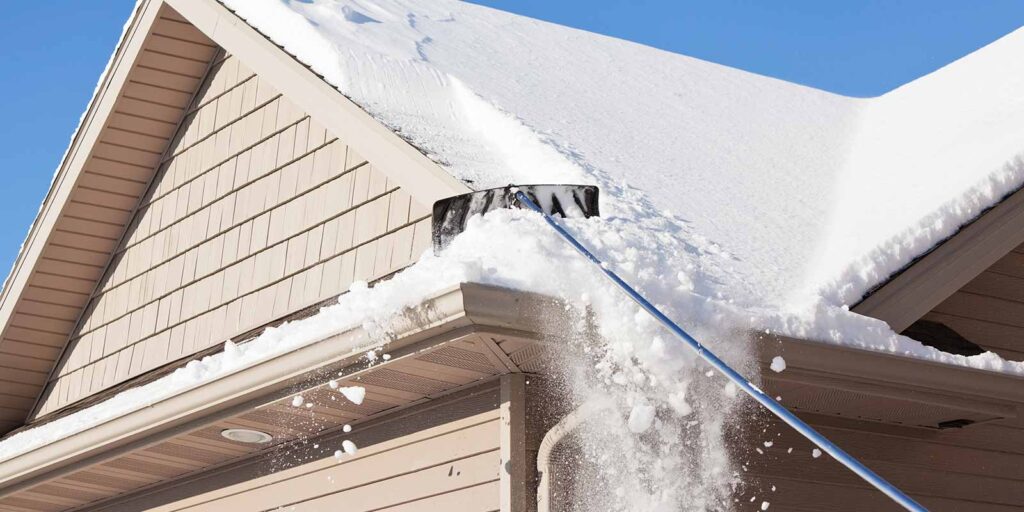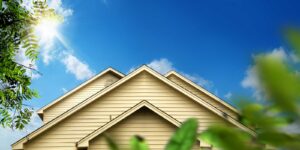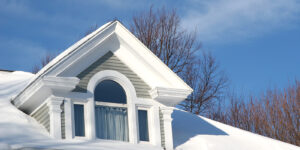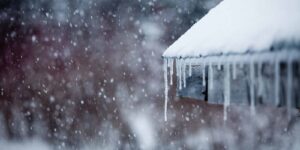We all want to keep our homes safe when winter storms start rolling through. And while proper maintenance throughout the year is the best way to keep your home in good shape, it’s always nerve-wracking to watch the snow pile up on your roof.
So, what should you do if the snow is starting to pile up?
Your first instinct may be to remove the snow like you would with your driveway. But that’s not usually necessary. It takes a lot of time and precaution to remove snow safely, so unless the snow poses a threat to your roof, you can generally let it sit until it melts naturally.
However, if your home is prone to ice dams – ice that builds up on the eaves of a roof after a snowfall – then removing the snow could be the best way to avoid damage. Ice dams form when a portion of the snow melts on a warmer area of the roof, then runs down to the eaves and refreezes, causing a blockage that holds water. That water can seep up and under your shingles, causing roof leaks.
If you absolutely must remove snow from your roof, the safest way to do it is with a roof rake. These “rakes” look like long shovels with a pole that extends to reach the top of your roof. Most roof rakes have rollers or wheels that will make it easier to move over your shingles. Simply stand on the ground and operate the rake pulling the snow down and off of your roof.
If the snow is piling up and you see the signs of an ice dam, like icicles with a ridge behind them and leaking in your attic, do not attempt to break up the dam with any type of rake or shovel. The best way to handle an ice dam is a simple DIY approach to melting the ice and giving the water a pathway to run down and off your roof. Fill the leg of a pantyhose with a calcium chloride ice melter and lay it so that it crosses the ice dam and allows water to run into the gutter.
If ice dams are a regular occurrence with snowfall on your roof, then you should use your roof rake proactively. Just as you would shovel the front walk a few times to avoid heavy snow buildup, you can also stop ice dams with early intervention.
But ice dams are often a sign that your roof needs maintenance. Once you’ve seen an ice dam form, you should call a roofing professional to assess your attic ventilation and insulation. Improper ventilation and insulation cause the warmer and colder pockets in your roof and allow the ice dam to form in the first place.
Whatever you do, do not get on your roof during winter weather. It is slippery and will be a huge fall risk. We always recommend calling a professional to come out and give you options for snow removal or roof repair if you’re not sure what to do about the snow on your roof.




